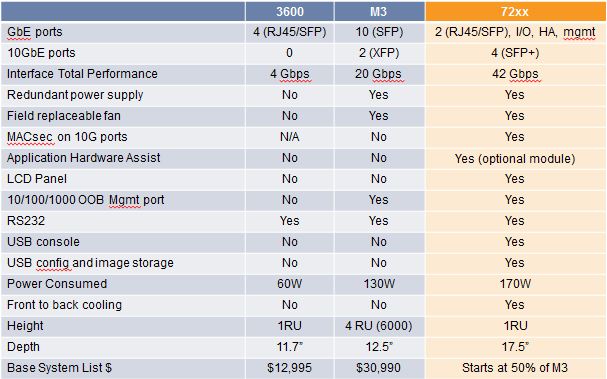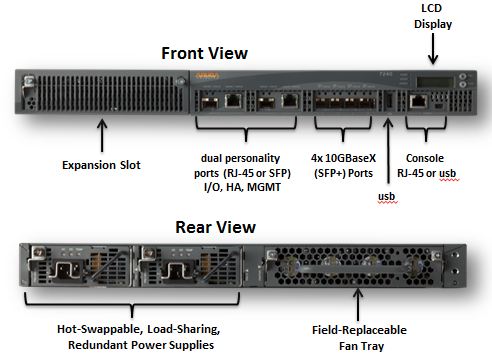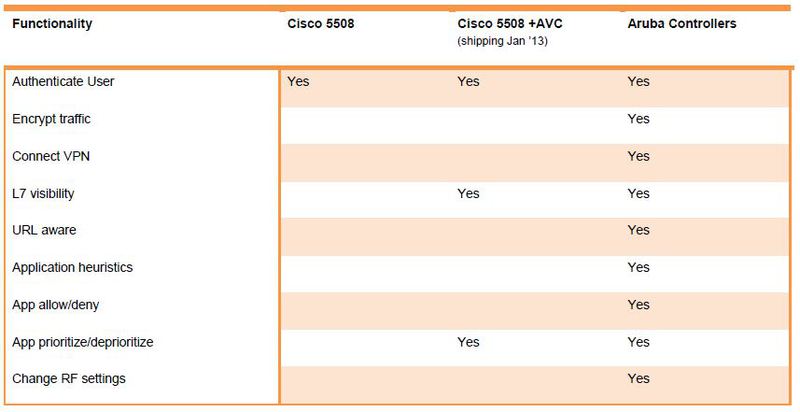New controller from Aruba Networks - 72xx series - first look
Instead of intro ...
Good day to all who read!
As you understand, I work with Aruba equipment, which, unfortunately, is not very common in Russia. But it is temporary. You can read my first post about Aruba here .
The other day, a new wireless network controller came out, which I would like to tell you very briefly - the piece of hardware looks quite advantageous against the background of already released controllers, as well as Cisco solutions, which is great for building wireless networks for large organizations.
What is it?
The WLAN controller is the core that allows you to centrally manage the network. In particular, collect access points in groups (each with its own policies and settings, QoS, etc.), monitor the status of the network. The controller also performs other service functions: firewall, WIPS system (prevention of intrusion into wireless networks) and others. The main limitations that are characteristic of all WLAN controllers are the number of supported access points, the number of users (in the case of implementing policies by users), the firewall throughput (traffic filtering rate), and, of course, the price.
What good is the new controller
Until recently, there was no solution in the Aruba line that could support a large number of access points operating in an organization's LAN for relatively little money. But now the situation has changed. The new controller can support from 512 (younger model) to 2048 (older model) access points. For comparison, 2048 access points will be enough to cover, say, the main building of MGTU. N.E. Bauman (The one that stands on the Yauza). Well, or as marketers compare in Aruba - 3 Empire State Building. But we marketers have every right not to believe. But for MGTU I vouch. In addition, he is good and that he is ready for the new standard 802.11ac (briefly about the standard can be read in the post comrade apcsb ). However, at this point, I think, it does not play a big role, because at the moment there are no new access points from Aruba that would support this standard (leaving aside arguments about how viable this standard is in Russia) . Apparently, the first TDs will appear by the middle of next year. At the moment, this controller is good because it supports relatively small money (about $ 23,000 for the younger model of the series and $ 43,000 for the older):
- 512-2048 directly connected to it access points (via LAN)
- From 20 to 40 Gbit / s - throughput
- SFP + support
- Power backup
In order not to list everything, here’s a comparison with the existing older models of Aruba Networks controllers (taken from the official slideshare presentation):


')
Accordingly, Aruba Networks itself positions its controller as something between 3600 and M3, which was top (at the moment, the situation at prices is such that it is more profitable to take a 70xx controller than a modular 6000. It is not entirely clear, in that case, what will happen to 6000 controller, it may be removed from production)

The controller itself is standard (1U) in size, it looks like the figure below:

In conclusion, I propose to look at the tablet (found by Google), which compares Aruba with Cisco (knowing the price ratio for the current Cisco / Aruba equipment, I can say that the table is not unfounded; the difference is unlikely to reach 50% in real life, but 30-40 % - exactly. True, it depends, among other things, on many other factors):



Thank you all for your attention!
PS on Habré also found a free seminar on the basics of Aruba Networks - if someone became interested, it might be useful to go.
Source: https://habr.com/ru/post/162581/
All Articles